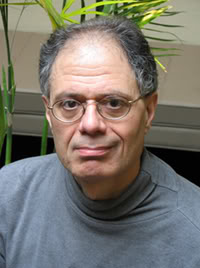In my experience, few people excel at both telling stories and making arguments. Some do, of course; but as so often in matters of psychic economy, there seems to be an overall inverse law.
Throughout David Halberstam’s 800-page The Fifties, there is scarcely a glimpse of an argument or a glint of original insight. Explanatory passages are few and perfunctory, there only to introduce or connect the book’s innumerable portraits and mini-narratives. As an interpreter of the ‘50s, Halberstam is unfailingly, unrelievedly conventional.
But what a story teller! Once you’ve adjusted your expectations, The Fifties is engrossing, enthralling, enchanting. Every character and episode you’re likely to remember from the decade, along with many you’ve doubtless never heard of, gets his/her/its fifteen minutes, or ten pages: surprisingly rounded, balanced, empathetic accounts, which are also (unsurprisingly, it you’ve read any Halberstam before) fast-paced and full of lively quotes from hundreds of author interviews.
Halberstam’s range is amazing. The Fifties teems with soldiers and politicians, scientists and bureaucrats, entrepreneurs and entertainers, civil-rights pioneers and sexual radicals, and even a couple of artists and thinkers (though no ideas). Among the crowd of characters and scenes: Truman, Dewey, Acheson, MacArthur, Ridgway, Eisenhower, the Dulles brothers, Taft, McCarthy, Nixon, Stevenson, Kefauver, and Castro; Inchon and Yalu, the overthrow of Arbenz and of Mossadegh, the Checkers speech, the Brown decision, the Khrushchev visit, the U-2 shootdown; Oppenheimer, Teller, von Neumann, von Braun, Gregory Pincus and John Rock (inventors of the Pill); Margaret Sanger and her patron Katharine McCormick, Alfred Kinsey, Betty Friedan, and Hugh Hefner; the McDonald brothers and Ray Kroc, Bill Levitt of Levittown, Eugene Ferkauf of Korvettes, Kemmons Wilson of Holiday Inns, Sam Phillips of Chess Records, Alfred Sloan and a half-dozen others from General Motors, and the inventors of the mechanical cotton picker, the V-8 engine, and the Volkswagen Beetle; Emmett Till, Rosa Parks, the nine black adolescents who integrated the Little Rock schools, Orval Faubus, Sheriff Clarence Strider, and Martin Luther King, Senior (Junior, too); Fred Allen, Jack Benny, Milton Berle, Ed Sullivan, Marlon Brando, James Dean, Elia Kazan, Marilyn Monroe, Tennessee Williams, Mickey Spillane, Elvis Presley, Ricky Nelson, I Love Lucy, Peyton Place, The Man in the Gray Flannel Suit, and the TV quiz show scandals. For highbrows, there are Allen Ginsberg and C. Wright Mills. There are even a few fascinating pages on the immortal Celtic center Bill Russell.
For those who know the period well, there is, I suspect, not much new in Halberstam’s vast tract of anecdote and vignette. For the rest of us, though, there are plenty of good bits, like Eisenhower’s snort of disgust at inflated military budgets: “God help the nation when it has a President who doesn’t know as much about the military as I do.” Or Ray Kroc’s lyrical effusion: “Consider the hamburger bun. It requires a certain kind of mind to see the beauty in a hamburger bun. Yet is it any more unusual to find grace in the texture and softly curved silhouette of a bun than to reflect lovingly on the hackles of a favorite fishing fly? Or the arrangements and textures and colors in a butterfly’s wings? Not if you’re a McDonald’s man. ... Then this plump yeasty mass becomes an object worthy of serious study.” More soberingly: I had no idea that “in the 1930s a majority of states ... still had laws prohibiting the employment of married women."
The Fifties does have, if not an argument, something of a theme: the dawning of the Television Age. Through the TV commercial, the 30-second spot, the nightly news, and the situation comedy, the new technology transformed politics, business, and culture. We knew that, of course; but Halberstam doesn’t merely say it, he shows it. There’s Ike grumpily acceding to makeup on his shiny bald pate (“To think that an old soldier should come to this”) and Stevenson haughtily declining to use his children in a campaign spot (“[Sorry,] old boy, we don’t do things like that in our family”). There’s John Chancellor’s live coverage of the Little Rock riots, which transfixed and appalled a hundred million are viewers, sounding the knell of segregation. There are the fateful mid-50s Chevy commercials, so successful that they may have taken the edge off GM’s commitment to engineering, inaugurating the company’s long, slow decline.
Even that old chestnut, the first Kennedy-Nixon debate, is compellingly dramatized. It is the book’s final set-piece, and Halberstam, with his journalist’s knack for quoting things far more intelligent than he himself could have said, goes out with a couple of zingers. Russell Baker distilled a sea change in a sentence: “That night, image replaced the printed word as the natural language of politics.” With a haunting appropriateness, Halberstam gives the last word to one of the grandees of the old order. “Do you get a funny sort of sense,” Dean Acheson wrote to Truman,
"that, so far at least, there are no human candidates in this campaign? They seem improbable, skillful technicians. Both are surrounded by clever people who dash off smart memoranda, but it is not pulled together on either side, by or into a man. The ideas are too contrived. ... These two bore the hell out of me."
The ‘50s were also Norman 0. Brown, Lionel Trilling, Norman Mailer, Robert Lowell, Paul Goodman, Dwight Macdonald, Lewis Mumford, Hannah Arendt, Jackson Pollock, Orson Welles, Miles Davis, Lenny Bruce, and Malcolm X, none of whom figure in this huge book. The Fifties is mainstream, middlebrow history. Don’t read it looking for the movements of Spirit, the pilgrimage of Mind.
But do read it. Ezra Pound famously defined art as “news that stays news.” No one, including himself, would call Halberstam an artist. But he has immortalized (or at least temporarily revived) the ephemera of an epoch. The Fifties may not stay news forever, but it’s fun for a while.
